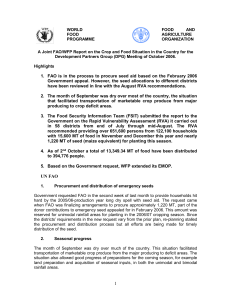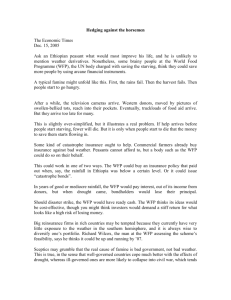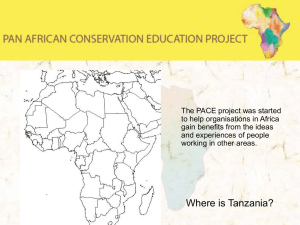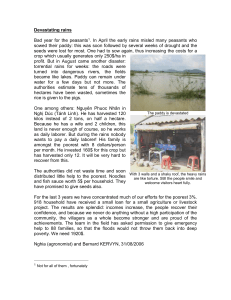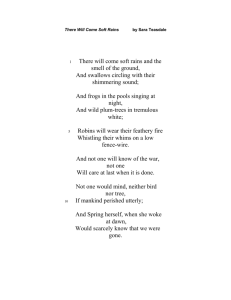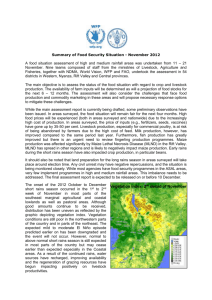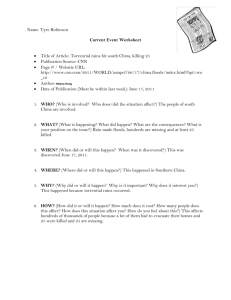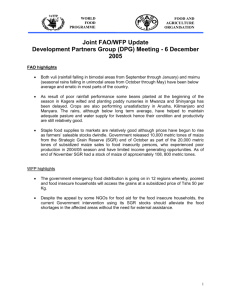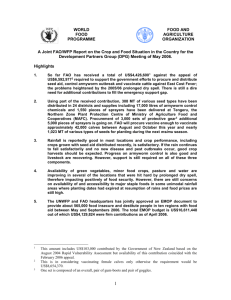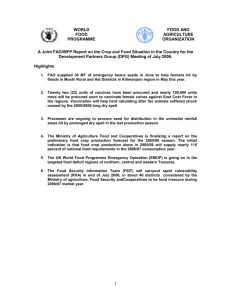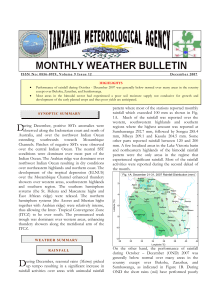Highlights
advertisement
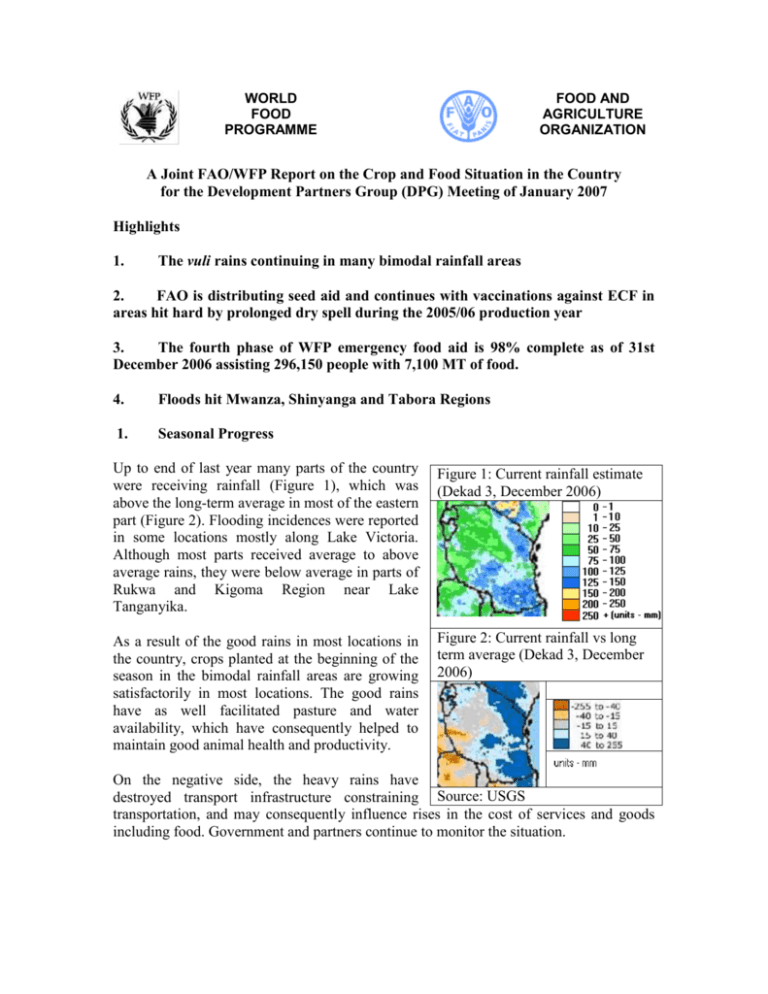
WORLD FOOD PROGRAMME FOOD AND AGRICULTURE ORGANIZATION A Joint FAO/WFP Report on the Crop and Food Situation in the Country for the Development Partners Group (DPG) Meeting of January 2007 Highlights 1. The vuli rains continuing in many bimodal rainfall areas 2. FAO is distributing seed aid and continues with vaccinations against ECF in areas hit hard by prolonged dry spell during the 2005/06 production year 3. The fourth phase of WFP emergency food aid is 98% complete as of 31st December 2006 assisting 296,150 people with 7,100 MT of food. 4. Floods hit Mwanza, Shinyanga and Tabora Regions 1. Seasonal Progress Up to end of last year many parts of the country were receiving rainfall (Figure 1), which was above the long-term average in most of the eastern part (Figure 2). Flooding incidences were reported in some locations mostly along Lake Victoria. Although most parts received average to above average rains, they were below average in parts of Rukwa and Kigoma Region near Lake Tanganyika. Figure 1: Current rainfall estimate (Dekad 3, December 2006) As a result of the good rains in most locations in the country, crops planted at the beginning of the season in the bimodal rainfall areas are growing satisfactorily in most locations. The good rains have as well facilitated pasture and water availability, which have consequently helped to maintain good animal health and productivity. Figure 2: Current rainfall vs long term average (Dekad 3, December 2006) On the negative side, the heavy rains have destroyed transport infrastructure constraining Source: USGS transportation, and may consequently influence rises in the cost of services and goods including food. Government and partners continue to monitor the situation. 2. Emergency Support Activities Until end of December 06, FAO, in collaboration with partners, has delivered to districts a total of 1,640 MT of seed. This is all seeds aid planned for this season. As regards East Coast Fever, by end of October vaccinated female calves reached nearly 100,553 calves which are 83.46 percent of the target. This activity is progressing well towards attaining the plans and targets to vaccinate the remaining 8,400 calves. 3. WFP Emergency Operation (EMOP 10519) The fourth and final phase of food distribution, that started in November, is now compete at 98% in the areas of Dodoma rural, Mpwapwa, Kondoa, Manyioni, Iramba, Igunga, Magu, Misungwi, Kwimba, Shinyanga Rural, Meatu, Kishapu,Longido, Monduli and Maswa. Five villages still remain to receive food in Ngorongoro and Singida rural due to heavy rains, which deteriorated existing road conditions to reach beneficiaries. As of 31st December 2006, a total of 7,100 MT of food have been distributed to 296,150 people during this 4th phase. This EMOP will end on 31 January 2007. 4. Floods in Mwanza, Shinyanga and Tabora Regions Responding to the Government’s request for assistance to flood-affected communities in the Mwanza, Shinyanga and Tabora Regions, UNHCR provided from the Great Lakes Regional stockpile in Ngara, the Magu in Mwanza and Igunga in Tabora with the following items: 515 plastic sheets; 25 plastic rolls (for use in the construction of temporary communal structures or latrines); 515 10-litre Jerry cans 515; and 250 blankets. The Government provided 91 MT of maize and beans to the affected households in Mwanza, Shinyanga and Tabora Regions.
